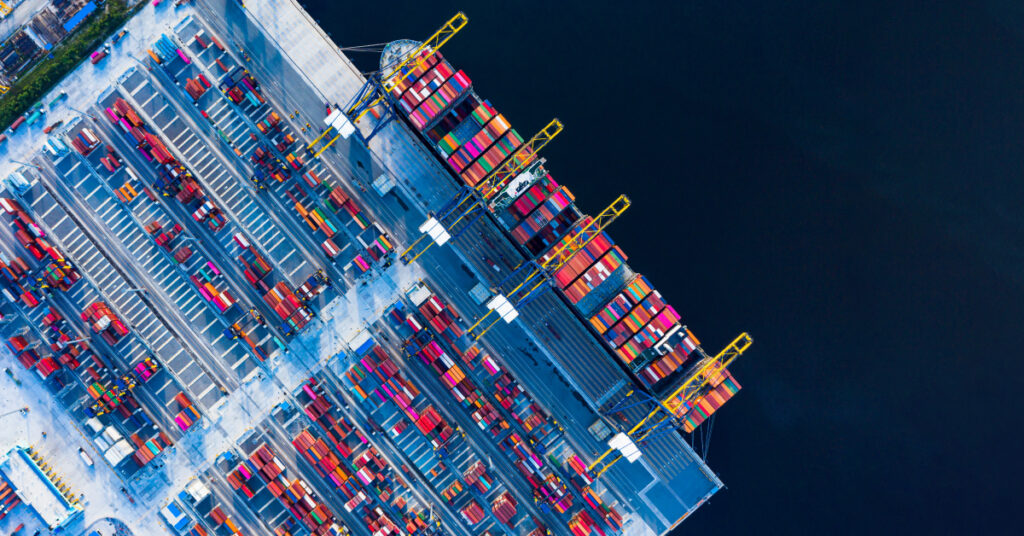Here are some key trends to watch as we move into 2024 and figure out “what’s next?” for the logistics and transportation networks that keep the world’s supply chains humming.
The backbone of any national economy, logistics and transportation enable the movement of goods from producers to consumers via land, rail, ocean and air. Thanks to the proliferation of global logistics and transportation networks, businesses can move goods across wider markets and consumers can buy and enjoy a more diverse range of products.
Logistics and transportation also support economic growth, optimize supply chains and help companies meet customer demands—even at a time when personalization and fast delivery expectations are putting increased pressure on manufacturers and distributors. By serving as the conduit between companies and their customers, efficient logistics and transportation systems help improve access to essential goods, support global interconnectedness and enhance our quality of life.
None of these core tenets of logistics and transportation changed much in 2023, nor will they pivot very much during the year ahead. However, as logistics networks are enhanced, transportations systems made more sustainable and technology finds its way into these vital networks, both shippers and end customers alike will benefit from those improvements.
“In an era of constant disruption, rapid digitization and growing consumer demands, the old ways of managing networks are nowhere near enough,” the Association for Supply Chain Management (ASCM) points out in its new Top 10 Supply Chain Trends in 2024 report. Some of the key shifts that the organization sees coming in 2024 include more digitization; increased use of big data and analytics; and new advances in artificial intelligence (AI).
“Advances in AI are happening at an unprecedented rate and offering numerous immediate returns — particularly in the areas of intelligent sourcing, inventory management and logistical route-planning,” ASCM says.
Stepping up to the cybersecurity plate
ASCM also expects more companies to invest in cybersecurity in 2024, knowing that their supply chain networks may be vulnerable to cybercriminals. “An alarming increase in cybercrime is likely to continue, leading to more data breaches, delays and shortages, reputational damage, compliance issues, safety risks, and financial loss,” ASCM points out. “Supply chain professionals must safeguard their networks by staying up-to-date on best practices; using a risk-based approach to cybersecurity; and investing in cybersecurity solutions, training and awareness.”
There will also be a focus on sustainability, knowing that transportation generates a high percentage of global greenhouse gases (GHGs). This puts users of logistics and transportation in a good position to be able to make a substantial difference—and one that goes beyond just complying with basic governmental regulations regarding sustainability.
“Companies that cannot trace the path of their products from development through procurement and production to shipping will find it difficult to meet the new requirements of governments, consumer associations and customers,” warns the American Journal of Transportation (AJOT), which also sees the labor shortage as a continuing area of concern as we move further into 2024. In response, many companies are pressing ahead with automation and digitalization projects that have already begun or are initiating new ones.
Organizations are also forming partnerships with secure, multimodal logistics partners like Odyssey, which offers solutions that are all backed by a vast, $3 billion global freight network. This gives Odyssey the leverage, regulatory expertise and local resources that you need to be able to rest easy at night. Having a secure, multimodal partner in your corner also helps reduce costs, increase efficiencies and ship your goods anywhere in the world.
Becoming resilient to future supply chain shocks
With quickly-evolving capabilities across generative AI, data analytics, automation, machine learning, Internet of Things (IoT), blockchain and more, the smart supply chain is well on its way to becoming the “new normal,” according to KPMG’s Supply chain trends 2024: The digital shake-up.
“Enabled with a raft of technology developments, a new paradigm is emerging in supply chain management. One where organizations can respond quicker to day-to-day requests, proactively address problem solving, and reduce errors and inefficiencies,” the global consultancy states. “It can also provide greater visibility, transparency and traceability. Most importantly, organizations will be more resilient to future supply chain shocks.”








